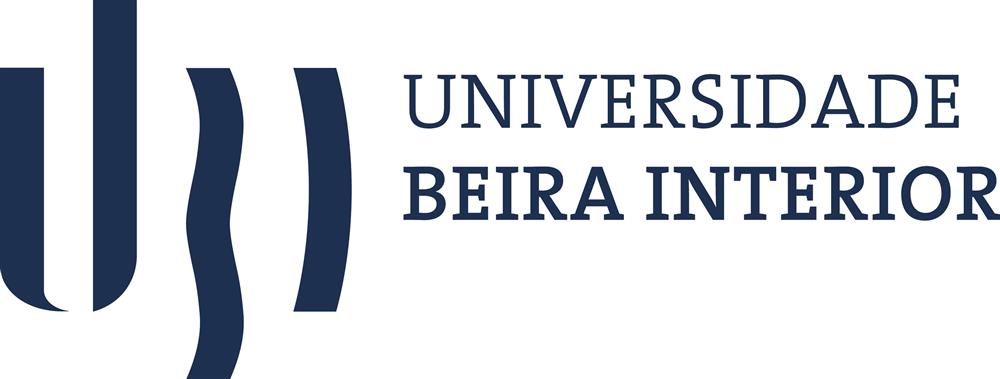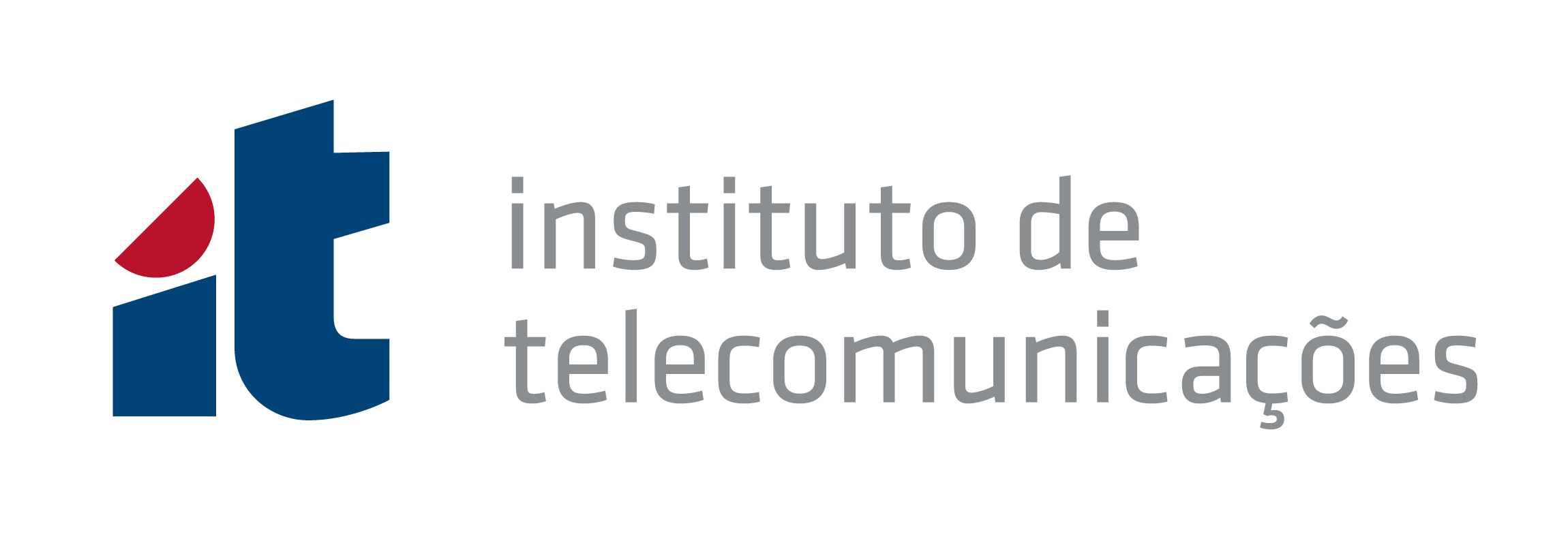 |
 
|
|---|---|
|
Mário M. Freire
|
Redes de Comunicação Sobrepostas / Overlay Communication Networks 2021/2022
PhD in Computer Science and Engineering
"Be. If you can not be a pine on the top of a hill, be a bush in the valley but be the best bush to the stream bank. Be a branch if you can not be a tree. If you can not be a branch, be a little grass and give joy to some way. If you can not be a highway, Be just a path, if you can not be the sun, be a star. It is not by size that you will have success or failure ... But be the best in whatever you are."
Pablo Neruda (1904-1973), Chilean poet-diplomat and politician.
Descrição da Unidade Curricular e Método de Avaliação / Course Description, Evaluation and Grading
Objetivos Gerais e Resultados de Aprendizagem / Course Objectives
O objetivo da unidade curricular consiste em dotar os estudantes de uma perspetiva ampla do estado da arte em redes de comunicação sobrepostas e de dotar os estudantes de competências que lhes permitam identificar problemas em aberto e realizar investigação científica nesta área. No final da unidade curricular o estudante deve ser capaz de caracterizar o estado da arte e conhecer as fronteiras do conhecimento em tópicos de redes de comunicação sobrepostas, deve ser capaz de identificar problemas em aberto nesse domínio e capaz de formular possíveis soluções para esses problemas.
The aim of the course is to provide students with a broad perspective on the state of the art of overlay communication networks and to provide students with skills to identify open problems and to conduct research in this area. At the end of the course the student should be able to characterize the state of the art and know the boundaries of knowledge on some topics of overlay communication networks, should be able to identify open problems in the field and be able to formulate possible solutions to those problems.
Programa / Syllabus
Perspectiva geral sobre redes de comunicação sobrepostas: redes de distribuição de conteúdos, Redes Privadas Virtuais (VPN), sistemas entre pares (P2P – Peer-to-Peer), comunicação anónima, aplicações emergentes. Peer-to-peer filesharing: perspetiva geral sobre a evolução do tráfego P2P a nível mundial, sistemas peer-to-peer não estruturados, métodos de procura, adição de estrutura a sistemas não estruturados, Distributed Hash Tables (DHT), sistemas peer-to-peer estruturados, desempenho de sistemas P2P. Peer-to-Peer media streaming: aplicações de streaming baseadas em topologias de overlay, IP multicast versus overlay multicast. Aspetos de segurança em redes de comunicação sobrepostas: segurança e privacidade, sistemas de comunicação anónimos (Tor (anonimidade online), Invisible Internet Project (I2P), outros), detecção e classificação de tráfego cifrado, blockchains e transações com criptomoedas.
Overview of overlay communication networks: content distribution networks, Virtual Private Networks (VPN), peer-to-peer (P2P) systems, anonymous communication, emerging applications. Peer-to-peer filesharing: general perspective on the evolution of P2P traffic worldwide, unstructured peer-to-peer systems, search methods, structure addition to unstructured systems, Distributed Hash Tables (DHT), structured peer-to-peer, P2P systems performance. Peer-to-Peer media streaming: streaming applications based on overlay topologies, IP multicast versus multicast overlay. Security aspects in overlay. communication networks: security and privacy, anonymous communication systems (Tor (online anonymity), Invisible Internet Project (I2P), others), detection and classification of encrypted traffic, blockchains and crypto-coin transactions.
Actividades de Ensino-Aprendizagem e Metodologias Pedagógicas / Planned Learning Activities and Teaching Methods
As aulas de contacto desta unidade curricular são baseadas em orientação tutorial. Pretende-se debater temas baseados em artigos científicos, direções de investigação e esclarecer dúvidas concretas apresentadas pelos estudantes após estes terem feito o estudo prévio dos artigos.
Língua da unidade curricular: Português ou Inglês. O suporte tutorial está apenas disponível em inglês.
Lectures of this course are based on tutorials. It is intended to discuss topics based on scientific articles and research directions and clarify specific doubts presented by students after previous study of the papers.
Couse language: Portuguese or English. Tutorial support is only available in English.
Métodos e Critérios de Avaliação / Evaluation and Grading
Análise crítica e discussão de 2 artigos de investigação nas aulas (durante as aulas 4 a 12): 50%.
Realização e discussão de um trabalho orientado para investigação: 50%.
Critical analysis and discussion of 2 research papers in lectures (during lectures 4-12): 50%.
Accomplishment and discussion of a research-oriented work: 50%.
Formulário para a Análise Crítica dos Artigos de Investigação / Review Form for the Critical Analysis of the Research Papers
As revisões dos artigos devem ser enviadas em formato pdf por e-mail ao insctructor através do email mario@di.ubi.pt até um dia antes da aula em que o paper vai ser discutido. A revisão deve incluir os seguintes campos: Nome do aluno, Nome do paper, Breve resumo do artigo, Pontos fortes do paper, Pontos fracos do paper, Análise crítica e comentários, Duas questões de investigação interessantes sobre o papel.
Reviews must be sent in pdf format by email to the insctructor at mario@di.ubi.pt by one day before the lecture where the paper is going to be discussed. The review must include the following fields: Name of the student, Name of the paper, Short summary of the paper, Main streghts of the paper, Main weaknesses of the paper, Critical analysis and comments, Two interesting research questions about the paper.
Trabalho Orientado para Investigação / Research-oriented Work
O trabalho orientado para investigação pode ser um de 2 tipos: i) Projeto laboratorial que explora aspetos de investigação envolvendo redes de comunicação sobrepostas. É recomendada a leitura deste artigo e desta tese. ii) Elaboração de um survey paper ao nível da ACM Computing Reviews, no qual, de forma clara, rigorosa e pedagógica, o estudante descreve o objecto de estudo e eventuais perspectivas de desenvolvimento futuro do tópico em estudo, envolvendo redes de comunicação sobrepostas. O título do survey deve centrar-se no tópico, ser curto, claro e eye-catching. Para a elaboração do survey, o estudante deve seguir as instruções para autores e o formato disponíveis em Author Guidelines. Cada estudante pode enviar uma proposta de trabalho orientado para investigação, enquadrado dentro de um destes dois tipos de trabalhos, de acordo com os seus interesses de investigação, para o endereço de email: mario@di.ubi.pt, até 30 de outubro. Cada proposta de trabalho orientado para investigação deve conter, numa página A4, o título do trabalho, o nome e o número do estudante, os objetivos e uma breve descrição do trabalho a desenvolver. Aos estudantes que não proponham um trabalho, será atribuído pelo docente um trabalho orientado para investigação na aula do dia 3 de novembro.
O trabalho orientado para investigação é realizado individualmente e pode ser defendido durante as aulas ou em exame. A apresentação e discussão do trabalho inclui a apresentação do trabalho, com duração máxima de 20 minutos, e a discussão do trabalho, com duração máxima de 10 minutos. Cada estudante deve indicar no acetato de rosto da apresentação o título do trabalho, o respetivo nome e número de estudante e deve enviar a respetiva apresentação, com a descrição do trabalho realizado, num ficheiro em formato pdf ou MS power point, usando o template disponível aqui, até 24 horas antes da hora marcada para apresentação e discussão do trabalho, para o email: mario@di.ubi.pt.
The research-oriented work can be one of two types: i) A laboratory project that explores research aspects involving peer-to-peer systems. It is recommended the reading of this article and this thesis. ii) Elaboration of a survey paper, in which, in a clear, rigorous and pedagogical way, the student describes the object of study and possible perspectives of future development of the topic under study. The title of the survey should focus on the topic, be short, clear and eye-catching. For the preparation of the survey, the student should follow the instructions for authors and the format available at Author Guidelines. Each student may submit a proposal for a research-oriented work within one of these two types of work, according to his/her research interests, to the email address: mario@di.ubi.pt, by October 31. Each proposal for research-oriented work must contain, on an A4 page, the title of the work, the name and number of the student, the objectives and a brief description of the work to be carried out. The instructor will assign research-oriented work proposals to students who have not proposed research-oriented works in the lecture of November 3.
The research-oriented work is performed individually and can be defended during lectures or in exam. The presentation and discussion of the work includes the presentation of the work, with a maximum duration of 20 minutes, and discussion of the work, with a maximum duration of 10 minutes. Each student must indicate on the first slide of the presentation the student's name and number and must send the presentation, with the description of the work done, in a file in pdf or MS power point format, using the template available here, by 24 hours before the scheduled time for presentation and discussion of the work, to the email: mario@di.ubi.pt.
Plano das Aulas Teóricas / Schedule
Lecture 1 (September 22, 2021, 12:00-13:00, room 6.04).
Sumário: Apresentação do Professor aos Estudantes. Indicação da localização do gabinete do professor e do horário de atendimento. Objectivos da unidade curricular e competências a adquirir. Conteúdos programáticos. Método de avaliação. Bibliografia de apoio à unidade curricular.
Lecture 2 (September 29, 2021, 12:00-13:00, room 6.04).
Sumário: Perspectiva geral sobre o funcionamento da unidade curricular.
Abstract: Course overview
Lecture 3 (October 6, 2021, 12:00-13:00, room 6.04).
Sumário: Perspetiva geral sobre a evolução do tráfego peer-to-peer a nível mundial. Perspetiva geral sobre sistemas peer-to-peer.
Abstract: Overview of Worldwide Evolution of Peer-to-Peer Traffic. Overview of Peer-to-peer Systems. Required Reading:
Global Internet Phenomena Report, Sandvine, 2015.
Peer-to-peer systems by Rodrigo Rodrigues and Peter Druschel in Communications of the ACM, 53(10): 72-82, 2010.
Lecture 4 (October 13, 2021, 12:00-13:00, room 6.04).
Sumário: Peer-to-peer overlays. Peer-to-peer filesharing.
Abstract: Peer-to-peer Overlays. Peer-to-peer filesharing. Required Reading:
A Survey on Resource Discovery Mechanisms, Peer-To-Peer and Service Discovery Frameworks by Elena Meshkova, Janne Riihijärvi, Marina Petrova, and Petri Mähönen in Computer Networks 52(11): 2097–2128, 2008.
A Survey and Comparison of Peer-to-Peer Overlay Network Schemes by Eng Keong Lua et al. in IEEE Communications Surveys and Tutorials, 7(2): 72-93, 2005.
Lecture 5 (October 27, 2021, 12:00-13:00, room 6.04).
Sumário: Sistemas peer-to-peer não estruturados. Métodos de procura. Adição de estrutura a sistemas não estruturados.
Abstract: Unstructured Peer-to-Peer Systems. Search Methods. Adding Structure to Unstructured Systems. Required Reading:
Survey of Research Towards Robust Peer-To-Peer Networks: Search methods by John Risson and Tim Moors in Computer Networks 50 (17): 3485–3521, 2006.
Limited Scale-Free Overlay Topologies for Unstructured Peer-to-Peer Networks by H. Guclu and M. Yuksel in IEEE Transactions on Parallel and Distributed Systems 20(5): 667- 679, 2009.
Constructing Limited Scale-Free Topologies over Peer-to-Peer Networks by E. Bulut and B.K. Szymanski in IEEE Transactions on Parallel and Distributed Systems 25(4): 919-928, 2014.
On Adding Structure to Unstructured Overlay Networks by João Leitão et al. in Handbook of Peer-to-Peer Networking, Springer, 327-365, 2010 (Author Version).
Lecture 6 (November 3, 2021, 12:00-13:00, room 6.04).
Sumário: Distributed hash tables (DHT). Sistemas peer-to-peer estruturados.
Abstract: Distributed Hash Tables (DHT). Structured Peer-to-Peer Systems. Required Reading:
Kademlia: A Peer-to-Peer Information System Based on the XOR Metric by Petar Maymounkov and David Mazières in Revised Papers from the First International Workshop on Peer-to-Peer Systems, Springer-Verlag, LNCS 2429, 53-65, 2002 (Author Version).
Pastry: Scalable, Decentralized Object Location, and Routing for Large-Scale Peer-to-Peer Systems by Antony Rowstron and Peter Druschel in Proceedings of IFIP/ACM International Conference on Distributed Systems Platforms (Middleware 2001), Heidelberg, Germany, LNCS 2218, 329-350, 2001 (Author Version).
Tapestry: a Resilient Global-scale Overlay for Service Deployment by B.Y. Zhao et al. in IEEE Journal on Selected Areas in Communications 22(1): 41-53, 2004 (Author Version).
Lecture 7 (November 10, 2021, 12:00-13:00, room 6.04).
Sumário: Incentivos versus robustez em sistemas BitTorrent.
Abstract: Incentives versus robustness in BitTorrent systems. Required Reading:
Do incentives build robustness in BitTorrent? by Michael Piatek et al. in Proceedings of NSDI ’07: 4th USENIX Symposium on Networked Systems Design & Implementation, 1-14, 2007.
Lecture 8 (November 17, 2021, 12:00-13:00, room 6.04).
Sumário: Desempenho de sistemas BitTorrent.
Abstract: Performance of BitTorrent Systems. Required Reading:
A Survey of BitTorrent Performance by Raymond Lei Xia and Jogesh K. Muppala in IEEE Communications Surveys and Tutorials, 12(2): 140-158, 2010.
Lecture 9 (November 24, 2021, 12:00-13:00, room 6.04).
Sumário: Peer-to-Peer media streaming.
Abstract: Peer-to-Peer media streaming. Required Reading:
Survey of P2P Streaming Applications by Y. Gu et al. in IETF Internet-Draft, 2015.
Enabling Resilient P2P Video Streaming: Survey and Analysis by Osama Abboud et al. in Multimedia Systems, 17(3): 177-197, 2011.
Incentive Mechanisms in P2P Media Streaming Systems by Xiao Su and Suchreet K. Dhaliwal in IEEE Internet Computing, 14(5): 4-81, 2010.
Lecture 10 (December 15, 2021, 12:00-13:00, room 6.04).
Sumário: Aspetos de segurança em redes peer-to-peer.
Abstract: Security Issues in Peer-to-peer Networks. Required Reading:
Anonymity Analysis of P2P Anonymous Communication Systems by Jia Zhang et al. in Computer Communications, 34(3): 358–366, 2011.
Peer-to-Peer Overlays for Real-Time Communication: Security Issues and Solutions by Dhruv Chopra et al. in IEEE Communications Surveys and Tutorials, 11(1): 4-12, 2009.
Security and Privacy Issues in P2P Streaming Systems: A Survey by Gabriela Gheorghe et al. in Peer-to-Peer Networking and Applications, 4(2): 75-91, 2011.
Lecture 11 (January 5, 2022, 12:00-13:00, room 6.04).
Sumário: Detecção de tráfego peer-to-peer cifrado.
Abstract: Detection of Encrypted Peer-to-peer Traffic. Required Reading:
Detection and Classification of Peer-to-Peer Traffic: A Survey by João V. Gomes et al. in ACM Computing Surveys, 45(3): Article 30, 1-40, 2013.
Exploring Behavioral Patterns Through Entropy in Multimedia Peer-to-Peer Traffic by João V. Gomes et al. in The Computer Journal, 55(6): 740-755, 2012.
Identification of Peer-to-Peer VoIP Sessions Using Entropy and Codec Properties by João V. Gomes et al. in IEEE Transactions on Parallel and Distributed Systems, 24(10): 2004-2014, 2013.
Lecture 12 (January 12, 2022, 12:00-13:00, room 6.04).
Sumário: Apresentação e discussão dos trabalhos orientados para a investigação.
Abstract: Presentation and discussion of the research-oriented works.
“One of the problems of being a pioneer is you always make mistakes and I never, never want to be a pioneer. It’s always best to come second when you can look at the mistakes the pioneers made”.
Seymour Cray (1925-1996), Public Lecture at Lawrence Livermore Laboratories on the introduction of the CRAY-1, 1976.
Last update: 2021/09/21.